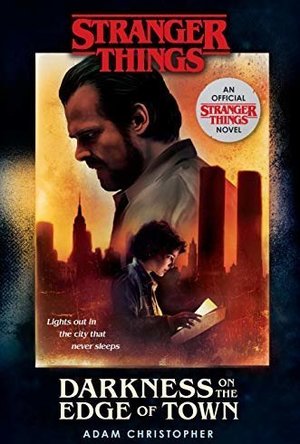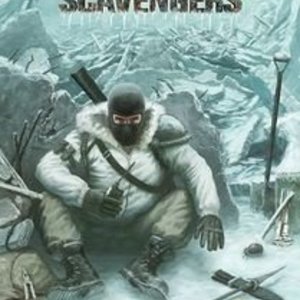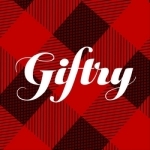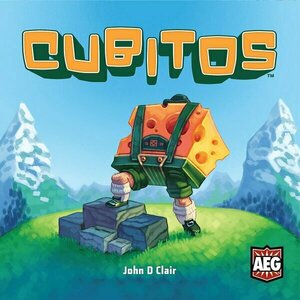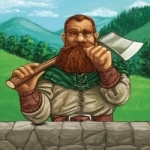
Glass Road
Games
App
Glass Road is the official digital version of Uwe Rosenberg's Glass Road board game. STORY: The...
Hadley (567 KP) rated Stranger Things: Darkness on the Edge of Town in Books
Jul 17, 2019
Adam Christopher is the chosen author to tell Stranger Things' fans about the most important homicide case that Jim Hopper ever worked on in the novel 'Darkness on the Edge of Town.' Fans may recall from season 2, when Eleven found a secret hatch in Hopper's cabin, it revealed boxes under the floor - one which was labeled 'New York.' This is that story.
The entire book is Hopper telling Eleven about his greatest homicide story from New York City. Readers get to meet new characters from Hopper's past, but the most memorable may be his partner in the Homicide Unit, Rosario Delgado (1977 was a time where Homicide Units didn't allow female detectives, and Delgado is one of the first of few that is allowed into the unit). Delgado, who is Cuban, but was raised in Queens, New York, has all the right attitude that wins over her partner, Hopper. The reader will realize that they are two-peas-in-a-pod.
Quickly, the story gets into the first case the two have together: the Zener card serial killer; here, we learn that there were two previous victims, both murdered the same way: stabbed five times with the wounds joining together to form a five-pointed star. Throughout the book, the story goes back and forth between 1977 and the present, where Eleven asks questions about the story, and also, Hopper questioning himself as to whether he should continue to tell Eleven the story.
But soon, we meet a very important man named Leroy Washington - a gang member who wants protection in exchange for the information that he holds- this leads Hopper to our villain: a cult leader who goes by the name Saint John. This villain believes that Satan is going to rise and destroy New York City.
Backtracking a little before, Hopper and Delgado are taken off the case of the Zener card murders, introducing readers to Special Agent Gallup. Gallup states that the third victim, Jacob Hoeler, was also a Special Agent, so the case is turned over to Federal Agents. "What you don't know, Detective, is that Jacob Hoeler is one of ours- - - Special Agent Jacob Hoeler. He was working on assignment, and the fact that he was killed in the course of his duties is of primary concern to my department. Therefore, we need to be sure that a most thorough investigation is carried out. In order to ensure that happens, we will be taking the case in-house. " Hopper, along with Delgado, refuse to let the case go, and secretly continue to work on it. But, as they dig deeper into the evidence and crime scenes, the two realize the murder case is a part of something much bigger - - - a cult that is armed with vehicles and weapons, ready to take over New York City for their leader, Saint John.
Readers get to see the story from both Hopper's and Delgado's point of view, which readers may question how Hopper knows Delgado's side of the story, but quickly to react, Eleven asks this very question for us: " 'Fair point,' said Hopper. 'But we - - - I mean, Delgado and me- - - we pieced it all together afterward. We had to interview everyone we could, and we put it all into a big official report. Actually, it took way longer to write that thing up than we spent on the investigation itself. We were even flown down to D.C. to present it to a bunch of anonymous suits in some federal building. They grilled us pretty well, too, although I ever found out who they all were. ' He grinned. ' Kinda sums the whole thing up, really.' " Even so, without Delgado's point of view, the story wouldn't have turned out as well as it did.
Hopper's obsession with cracking this case lands him in the center of it- - - he is recruited, not by choice, to the task force that is trying to top Saint John's big plan to destroy New York City. Leroy Washington, the informant from before, is Hopper's wing man for the mission, because Washington turns out to be a recruiting officer for the cult. Hopper is to pretend that he is a new recruit, and that he is an ex-cop, who just happened to 'murder' two people the night before. Hopper infiltrating the cult is one of the most exciting parts of the book, but the sequence of these scenes are much too short, leaving this reader disappointed.
Unfortunately, by this time, Delgado has become somewhat of a secondary character. She still works the case, being in the-know of Hopper going undercover, but we see little else of Delgado's character being developed. This is a missed opportunity indeed.
Although I enjoyed Christopher bringing Hopper's backstory to light, the writer is so detail oriented in his writing, that it bogged down much of the flow in the story. The reader is told things in almost every scene that come to nothing, and just seem to waste the reader's time. You may also find that the author uses the same words or physical actions to describe emotions for every single character (such as neck rolling to show stress), which gets old very quickly.
With that said, and only a few inconsistencies here and there, the book was very good. The story takes off pretty quickly and doesn't seem to slow down. The scenery descriptions put the reader right there with our favorite Hawkins Police Chief, Jim Hopper, but the best part about this book is that you don't have to be a Stranger Things' fan to enjoy it; anyone who enjoys Crime Fiction would love this story. Highly recommend!
the_mad_meeple (55 KP) rated Arctic Scavengers in Tabletop Games
Feb 19, 2020
Arctic Scavengers, the first and last game of the evening, couldn't have been further from my previous gaming experience. A fantastically thematic and competitive deck-building game, it was love at first fight. Deep into a post-apocalyptic winter wasteland, I was soon digging for medicine I would later use to attract hunters and was recruiting brawlers with my charismatic team leaders. After winning the fourth contested resource (a dog sled to add to my grenade) I was hooked and by the time we had thrashed out our final fight I had completed my online checkout.
Pros:
- Simple card drafting game perfect for new players.
- The theme is excellent and match the components brilliantly.
- The length of the game can be controlled by limiting the number of contested resources, allowing for faster play if required (although not recommended).
- The idea of digging for medicine seems hilarious but deciding whether to keep the shovel or take the net can be game-changing and keeps every decision interesting.
Cons:
- The expansions seem to take away from the core game too much for me adding in too many components which alter the base mechanics too much.
The Game
The game is won by the player who has the most people in their clan by the end of the game - after the last contested resource is won.
Playing best with four players, you are required to develop your initial deck in order to fight other players for contested resources and be the strongest clan among the post apocalyptic wasteland.
During each round a player draws 5 cards and is given the opportunity to perform any of the available actions before deciding whether they want to fight for the available 'contested resource'. Able to complete actions such as digging for junk, recruiting new members to their clan or drawing other cards from their hand, Arctic Scavengers is a game where you have to balance the potential to draw a useles refuge, who offers nothing in a fight but increases the size of your clan, with the need to draw brawlers for the fight. Do you choose the versatile scavengers who can do everything, providing you with a variety of options, or go big and recruit thugs for the next fight.
A brilliantly varied game Arctic Scavengers can be played differently every time the lid comes off and no matter who you play against you see something new. I can honestly say that everyone I have played this with have loved it and it is off the shalf at every games night.
I realise that this game will often be compared to other self contained deck-builders such as Dominion and Clank but this is by far my favourite of these and has permanent residence on my shelf for the foreseeable future.
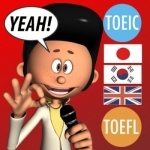
Word-Scape
Education and Games
App
How to use this app: Ideally it would be used along with the book from a famous University in...

MyHeritage
Reference and Social Networking
App
Build your family tree on the go - MyHeritage genealogy puts your family history right at your...

Hopscotch: Learn to Code
Education and Games
App
Hopscotch is a free, award-winning programming app for kids aged 9-13. Downloaded over 10 million...
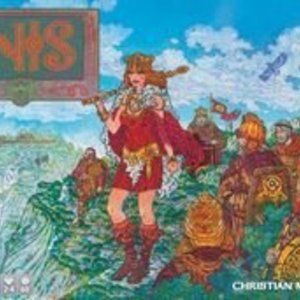
Inis
Tabletop Game
Inis is a game deeply rooted in Celtic history and lore in which players win by being elected King...
CelticGames BoardGames 2016Games
Purple Phoenix Games (2266 KP) rated Cubitos in Tabletop Games
Mar 17, 2022
Cubitos is a push-your-luck, dice building, racing game for two to four players. In it, players have runners that will be moving around a crazy race track, and another runner who keeps track of fans (the manager maybe?), and the first player’s runner to cross the finish line will be the winner! Now, managing movement and special abilities is where the game REALLY is, and it all boils down to which special dice are purchased and used, and whether Lady Luck will find favor or not. It’s a wild ride, so prepare your runner and let’s go!
To setup, place out one of the double-sided Racetrack boards, along with the Fan Track board. Runners for each player are placed at the Starting Line on the Racetrack board, and the other on the bleachers of the Fan Track. Each player receives a color-coded Player Board and nine gray starting dice. They receive a Phase Token to keep track of each phase in a round, and the starting player receives the Start Player Die. Each dice box is placed around the boards with the dice on top. All corresponding cards for each die type is placed by the dice box, and the game may now begin!
DISCLAIMER: We have adopted an unofficial variant/house rule that differs from the rules because we find it works better for us. During the phases where all players may play simultaneously we instead just have each player take a turn individually. -T
A turn in Cubitos is divided into two main phases with several sub-phases for each. During the main Roll Phase, players will first Draw dice from their personal Draw Zone (on the Player Board) and place them into the Roll Zone. Initially, players will have a hand size of nine, but that may be adjusted as the game progresses. Once the dice have been drawn the player then Rolls their dice. Every die face showing an icon is counted as a Hit, and every die showing a blank face is considered a Miss. All dice showing Hits are moved to the Active Zone of the board, and the player then decides if they wish to Push (their luck) and re-roll all the Misses in hopes of more Hits, or if they are done rolling. Once a player re-rolls their Misses, if the result is all Misses, the player Busts and must move ALL rolled dice to the Discard Zone on their board. However, players may continue to roll all Misses until they Bust or are content and stop.
The Run Phase then begins with players resolving their red die icons (crossed swords for attacks), and determining their other icons rolled for coins and movement. Feet icons (and certain dice special abilities) provide players with movement along the Racetrack board, and coins provide the player with purchasing power to buy new dice. Once a player’s Runner has landed on a reward spot on the board, the player receives the benefit and moves all dice used this turn to the Discard Zone on the Player board.
Every time a player Busts, or lands on a Fan icon on the Racetrack, the other matching Runner on the Fan Track board will move one spot along the track, and the player receives the benefits of the new space. These benefits are either an increase in hand limit of dice drawn, or more purchasing power in the form of credits. Reward spaces on the board could give players extra dice for free, allow players to remove dice from their collection, or even gain credits to be used at any time. The game continues in this fashion of each player taking their turns until one player crosses the finish line and wins!
Components. This box is chock full of tasty components that we all just adore. The boards and cards are all good quality and feature some fantastic art, and the custom dice are just so fun to handle. A truly ingenious use of folding arts is used when setting up all the dice boxes. Not only are they used in-game to remind players what icons are on each die face, but they also hold the dice during play, and store the dice in the box. I mean, triple duty dice boxes are where it’s at! Everything is super colorful and just a joy to play with each time. My one quibble is the very offensive block of cheese on the box cover. I am a big Chicago Bears fan, and seeing something so proudly displayed that even remotely resembles an homage to the Packers is such a shame to me. I really hope that wasn’t intentional, but I am also joking. Mostly.
The absolute best part about this game is the selection of action cards associated with each special set of dice. For example, the purple dinosaur dice could be paired with seven different cards, each with different abilities when the icon is rolled. Each color has a seven card deck, from which a card could randomly be used each game. The rulebook also offers 10 suggested combinations of cards, and also invites players to choose their own combos. This reminds me of a similar mechanic I first saw with the Dice Masters system, where each die’s faces could mean something completely different depending on the card associated with it. I loved that mechanic back then, and I do now as well.
I cannot believe I passed on this game for as long as I did. I mean, I like AEG-published games. We have reviewed John D. Clair games positively: Mystic Vale, with Custom Heroes and Space Base coming soon. Was it a subconscious dislike for the dumb cheese man on the cover? I am not too sure, but I am clearly glad to have it now. The cool dice. The interesting theme. The multi-use dice/card components. The fact they included both orange and purple dice. Am I into racing games now? The reasons are plentiful, and I just cannot wait for my next play of Cubitos. Maybe I can get my wife into it and it can be a staple in our rotation.
There are several other little rules that I did not mention here, but all in all I have had a blast every time I play Cubitos. I was certainly correct in wanting to add it to my collection, and having Josh teach Laura and me originally just adds a unique personal touch to the game for me. Creating lasting memories is a big reason I am so into board games in the first place, and I think Cubitos will hold a special place in my heart simply because I was able to play it with my best friends. They agree with me that this is a special game, and Purple Phoenix Games gives this a nonsquare 16 / 18. If you see this at your LFGS I highly recommend you pick up a copy. Don’t wait, like I did, because when you do get around to it, they just may be out of stock. And a suggestion: because the cheeseperson is wearing lederhosen, just refer to them as a great German friend. AND THAT’S IT. Go Bears.

